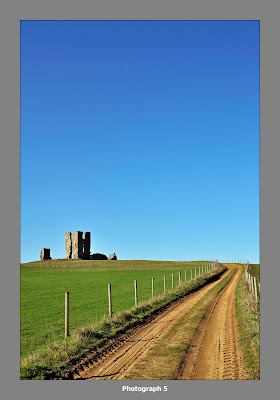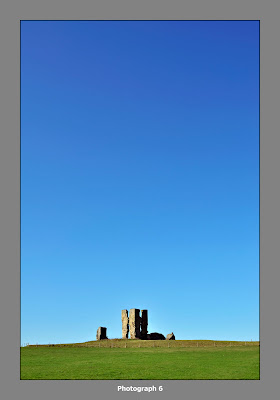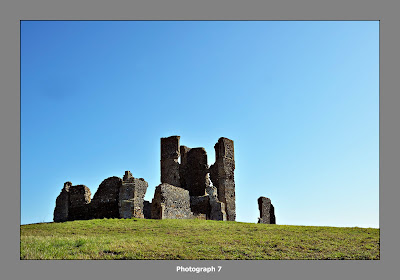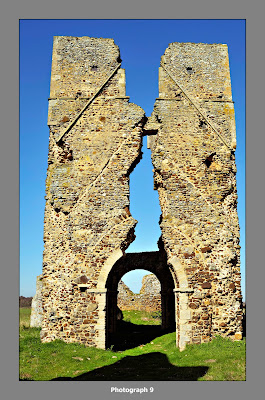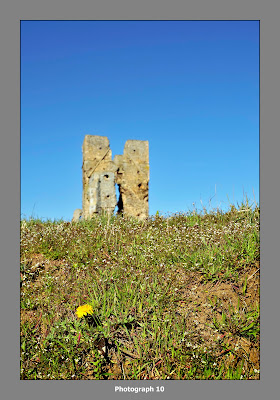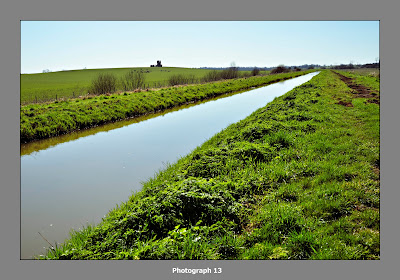Project 11 is the first in Part 2 of the course notes that looks at : Light and its measurement.
I like everyone else who has ever taken photographs seriously will know and understand that without "good" light the outcome of a shoot will be poor. Good light is however a commodity and while during the hours of daylight (even moonlight, which is of course reflected daylight) it exists in some shape or form it will suit some situations better than others. For landscape photography this "good" light is a different requirement to different people at different times. The date, your latitude on the surface, of time of day, cloud, significant weather etc all will change the light and it probably will never repeat itself in that location for many years, if ever. For those reasons I have come to try and plan shooting landscape and take some of the science into account. Not in a high level way at all, but simple planning of trips and shoots can help in avoiding disappointment. For example, I will never visit my favourite locations in The Lake District in the middle of Summer. The sun high in the sky flattens the landscape too much and although I know there is a dawn every day, its way too much to try and find it at 04:00. This is not a golden rule for every occasion. I shoot travel/tourism for Stock in
Menorca and for that type of work a high sun, blue sky and a beach full of sunbathers and swimmers is the ideal shot to advertise a holiday in the Mediterranean. So, Springtime and Autumn visits to The Lakes have better light by virtue of the sun's position in the sky (lower) and helps the modelling of the landscape. In addition the cooler mornings and afternoons have the possibility of smoke from chimneys and mist in valleys to add the atmosphere of a rural location.
Landscape photography and the issues of lighting in the UK in particular make for a busy time when in the field. After a storm the clouds will gradually break up, at random and huge shafts of sunlight will pour through like spotlights in a theatre. At those times you have to work quickly to catch these fleeting moments. I can recall moments when the need to change lens, measure the light, relocate etc were done at such speed it had made my previous work in sports photography look quite sedate.
The Colour of Daylight does not require any special shoot but does require that we understand and can identify the concept and practice of how daylight will contribute to our photography of the landscape. One of the problems that exists in identifying the various colours of daylight (as measured in Kelvin (K) ) is that our eyes are very adaptable and adjust to see all light as normal. This is particularly the case in doors with fluorescent tube lighting which is normally quite warm. The tubes and desk lamps in my office and studio have all been changed to 5400K daylight and the difference is very strong, and looks very blue when adjacent to normal tubes. It is however the only reliable way to view printed work and examine prints for correct colour. It is possible with a special meter to measure colour temperature. For landscape photography I do not require this. They are very costly and will offer little to my work. However, I can appreciate a need when copying work, such as paintings where faithful reproduction is of paramount importance, and especially when shooting on film.
This brings me to the differences of shooting on film and onto a
CCD. When shooting onto film the photographer must first choose a film, initially an ISO speed rating, negative/transparency and daylight or tungsten. The characteristics of a film are far more subjective and require the photographer to have viewed images from various film stock and with a project in mind make the correct choice. It is not possible here (or necessary) to describe characteristics of various films, although generally the saturation towards red in Kodachrome, blue in
Ektachrome and green on
Velvia are but a few. So having made your film choice you have to choose your filters carefully to balance the light source to the film, and get it right first time unless you want to repeat the work and correct errors. With view cameras there was always the possibility of using a Polaroid back to check the exposure, but the problem here was that the colour characteristics of the Polaroid would be different to the film for the final work.
Digital capture has to a large extent made this area of photography much easier. We can see instantly on the camera, or preferably on a tethered PC what effect any filtration is having and more importantly, adjust the camera settings to achieve correct white balance for the work in hand. I always shoot RAW images in the camera (sometimes plus a low resolution
jpg to view monochrome) as this permits development of what is essentially my digital negative. The in camera white balance setting therefore has little relevance while shooting. Setting it to Auto
WB will however allow the on board camera engine make a usable image for general observation while shooting.
So, with RAW images we can change the colour temperature at will. In Adobe
ACR the settings range from 2000K to 50000K. These extremes may come in useful one day but fro now and within the context of Landscape Photography I generally use the range 4000K to 7000K. For my taste outside of these limits is unacceptable. While converting and processing RAW images to TIFF for further work it is interesting to note that for monochrome conversion the colour balance can be used to manipulate the image.
Project 11 also looks at the Measurement of Light. Recently, perhaps as a result of shooting images for this course I had become interested in what perfect exposure might be. As part of my book buying I have Martin Freemans book "Perfect Exposure" and although I had wondered how
an entire book could be written on this subject I now understand. Modern DSLR cameras maybe OK at metering but really they are hampered by one basic flaw. Reflected light, and the colour of the reflective surface. The 18% grey card and all things averaged being responsible the way the camera tries to get an average. Having to take that into account everytime we meter in TTL mode is a pain, so I recently purchased a
Kenko KMF-2100 meter to replace my older a less ambitious
Sekonic. I wont go into all the technical detail here, as the link will take you to all that, but it is an incredible tool that can measure incident, spot, average, DR, flash and show the ratios of a mix of ambient and flash together.
I have always been a fan of incident light meter readings from my days track side shooting motor sport. White cars, red cars etc, using reflected
ttl based systems for that (especially on chromes) was pot luck.Back then I used a
Gossen Lunar 6.
There is as school of thought that maybe all this exposure business isn't so important with digital capture. After all in a split second I can see the image, see the histogram and can bracket 7 different exposures in 1 second. We have Adobe
Photoshop, where it is said we can correct it if it needs it. Maybe some of this is true, and if digital capture was to replace all film photography we would be safe working along these lines. Unfortunately this isn't the case. Large format film cameras are used widely among professionals and with transparency film stock is expensive, and not tolerant to poor exposure. I am not advocating the purchased of such equipment for this course (although it would be nice) but like being able to navigate by direct reckoning in the age of GPS, its comforting to be able to do it properly from basic principals.
So, my D3 etc is now always set to manual, I will take incident readings, supplemented by spot readings in critical areas and my photography will improve. Well we will have to wait and see, but it is comforting when using incident readings that the histogram does look good even though the camera is protesting that the exposure is wrong.
